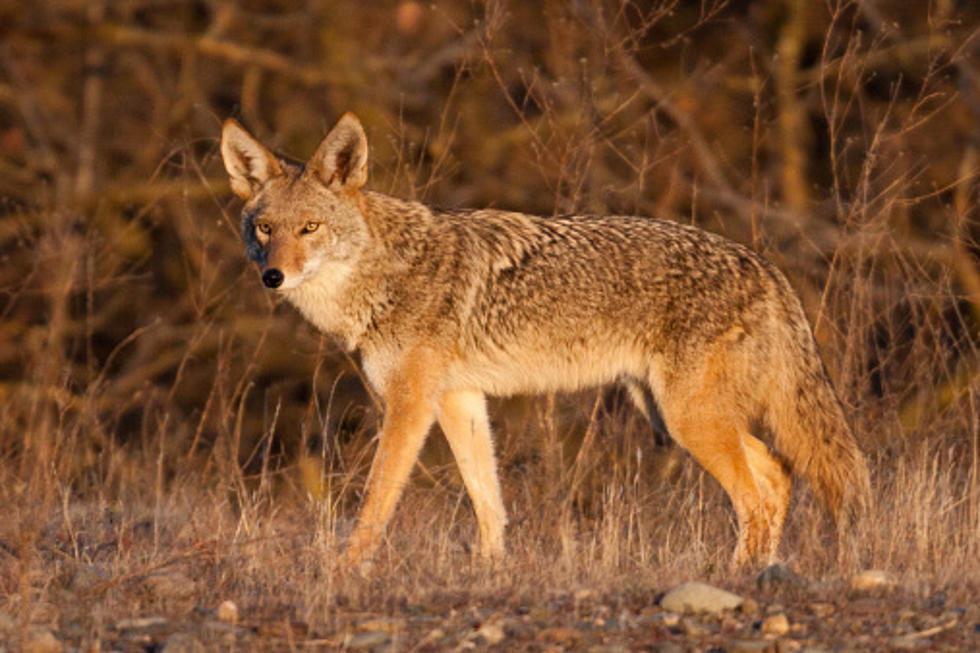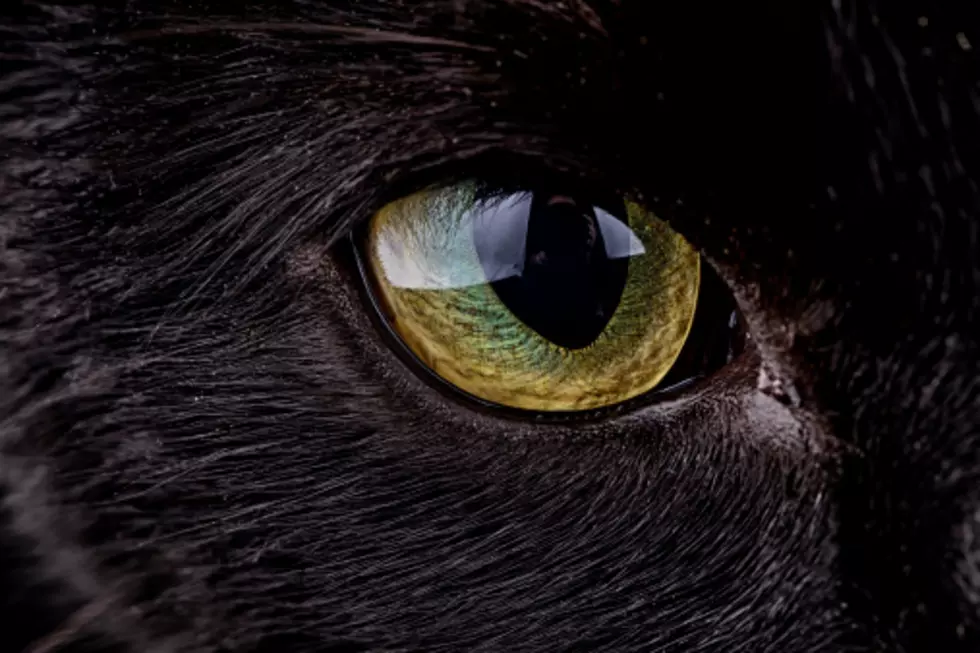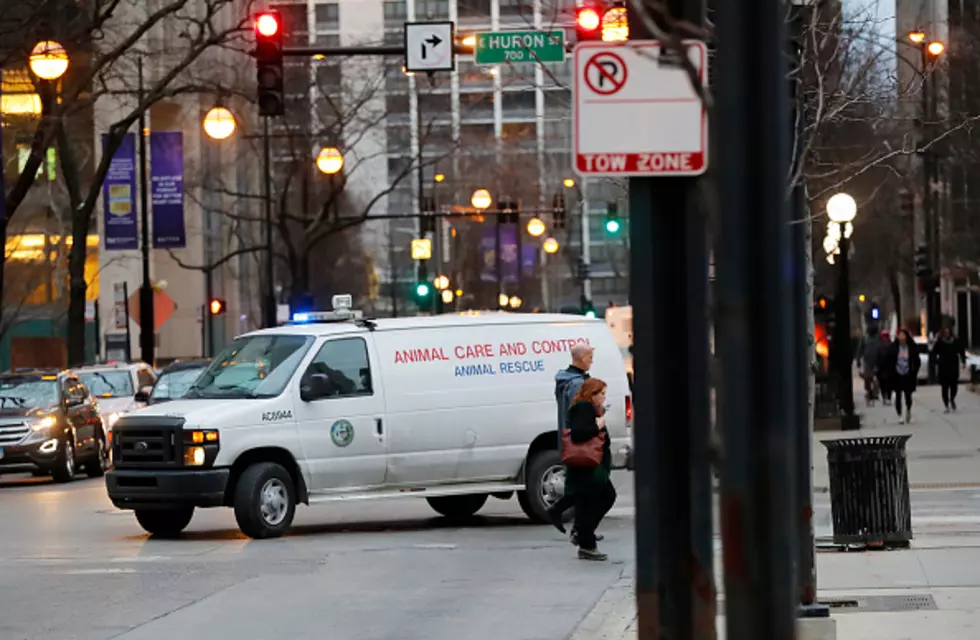
Meet Illinois’ Biggest Predator
Our radio stations sit in the middle of a residential neighborhood at bit west of Alpine Road, and just south of Highcrest. We've got a few acres out back where our radio towers are located, along with a couple of maintenance sheds. We've also have no shortage of visitors from the animal kingdom.
We've got at least one pair of hawks that love to sit on the towers and swoop down into the grass below to grab their prey (I've seen at least two squirrels meet their demise). We also have frequent visits from a family of foxes, whom I believe live very nearby. Wild turkeys? There are probably one or two bottles of the stuff in desk drawers, but the rest parade around our backyard on a regular basis. We were also greeted last Wednesday morning (around dawn) by three very large deer milling around the station's back patio.
Then, there was last Friday morning. As 97 ZOK's Sweet Lenny and I were out on the patio for a breath of fresh air around 10:30am, we noticed what at first looked like a large German Shepherd-type dog coming around the side of the building. Only, this wasn't a German Shepherd. It wasn't even a dog. It was the single biggest coyote that either one of us had ever seen. By time we managed to tell others here what we had witnessed, it was, of course, long gone. I guess our co-workers thought we were on some sort of peyote-inspired vision quest and had made it all up.
But then, today, our digital director Rob got a look for himself:
The coyote, if you didn't already know, is the largest predator in Illinois, according to the University of Illinois Extension. And what's more, the coyote population in Illinois has increased dramatically in the last 30 years. It's now estimated that some 30,000 coyotes call Illinois their home, including (what I've heard and seen anecdotally) quite a few right here in Rockford. And, for more good news, it's reproduction season for them.
Breeding peaks in late February or early March. Gestation is approximately 58 to 65 days, with pups born during late April or May. Litters of two to 19 pups have been recorded but six to seven pups per litter is average. Coyotes typically produce one litter per year. Den sites may be underground, under hollow trees, logs, or brush piles, or in abandoned buildings, but most are in vacant fox, badger, or woodchuck burrows that coyotes have taken over. Pups begin playing near the den entrance at three to four weeks of age. Pups are weaned by the time they are two months old and begin to learn how to hunt when they are two to three months old. By late summer or early fall most young coyotes will be on their own, but some stay with their parents for another year and help raise the next year's litter.
The coyote that Lenny and I saw last week looked very well fed. That got me wondering about their diets:
Coyotes took over the role of largest predator in Illinois after wolves and mountain lions were extirpated (removed) from the state during the 1860s. Coyotes hunt mice and voles, rabbits, deer fawns, and other prey, but they supplement their diet with insects, plants, and fruits and berries when these items are seasonally available. Besides being good hunters, coyotes are opportunistic feeders and will occasionally eat carrion, garbage, and dog and cat food. Coyotes may also kill livestock and poultry. However, there are many feral dogs in Illinois, and often the coyote is blamed for livestock depredation actually done by feral dogs. It is also commonly thought that urban coyotes frequently prey upon cats and small dogs. A recent study of coyotes in Cook County found that small rodents were the primary food source for urban coyotes. Cat remains were found in less than two percent of the coyote scats studied.
If you've seen them around your place, and chance are you have, the University of Illinois Extension has a few tips:
- Alert residents of the neighborhood and the local municipality (e.g., police, public safety officer) as soon as a problem develops with a coyote.
- Target the responsible coyote(s) when a pattern of "undesirable" behavior develops. Usually it will be easier to change human and domestic animal use of an area than to capture a coyote.
- Do not feed coyotes.
- Property owners should limit the availability of unintentional food sources such as bird food, pet food, ripe fruit, and trash.
- Comply with local ordinances that require oversight/restraint of pets. Do not leave small pets unattended when they are outside. Consider the use of fencing or kennel runs to protect small pets.
- Recognize that coyotes are a permanent fixture in Illinois' rural, suburban and urban areas. Seeing a coyote(s) cross a field, backyard, golf course, road, etc. does not necessarily constitute a problem or a dangerous situation for humans or domestic animals.
- Recognize that coyote population reduction (removing some or all of the coyotes in an area) is usually unrealistic and always temporary. Removal of coyotes also requires time, effort and funding.
- If removal of a coyote is deemed necessary, hire a person with coyote removal experience who is licensed by the IDNR. Coyote removals approved by the IDNR usually involve the use of cage (live) traps or padded foot-hold traps.
- Safety procedures for dealing with coyotes are different than those for dealing with a strange dog. If a coyote approaches you, do not run. Yell, stand up straight and wave your arms (the goal is to make yourself appear larger), or throw something at the coyote to scare it away.
And, let's not forget, coyotes can be real jerks (and not just with Acme products):
More From WROK 1440 AM / 96.1 FM









